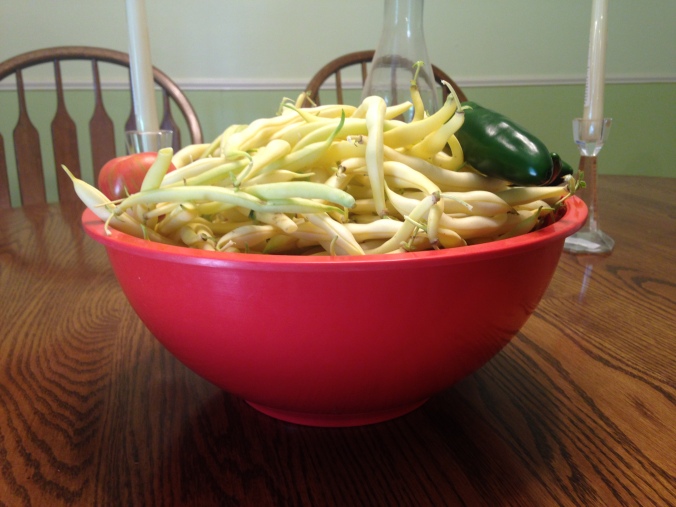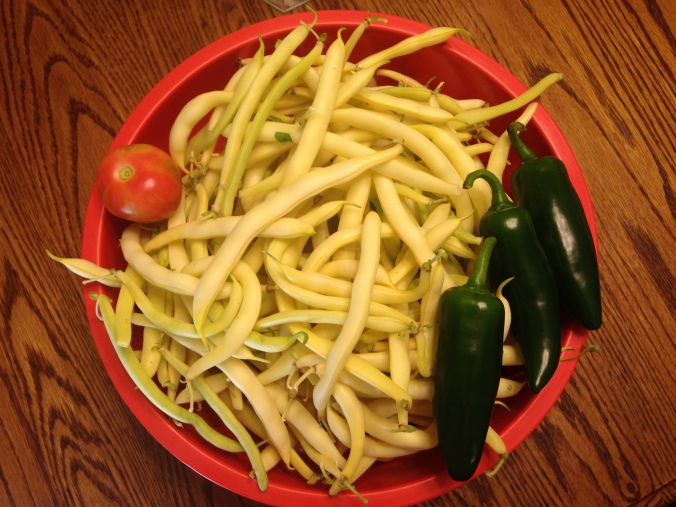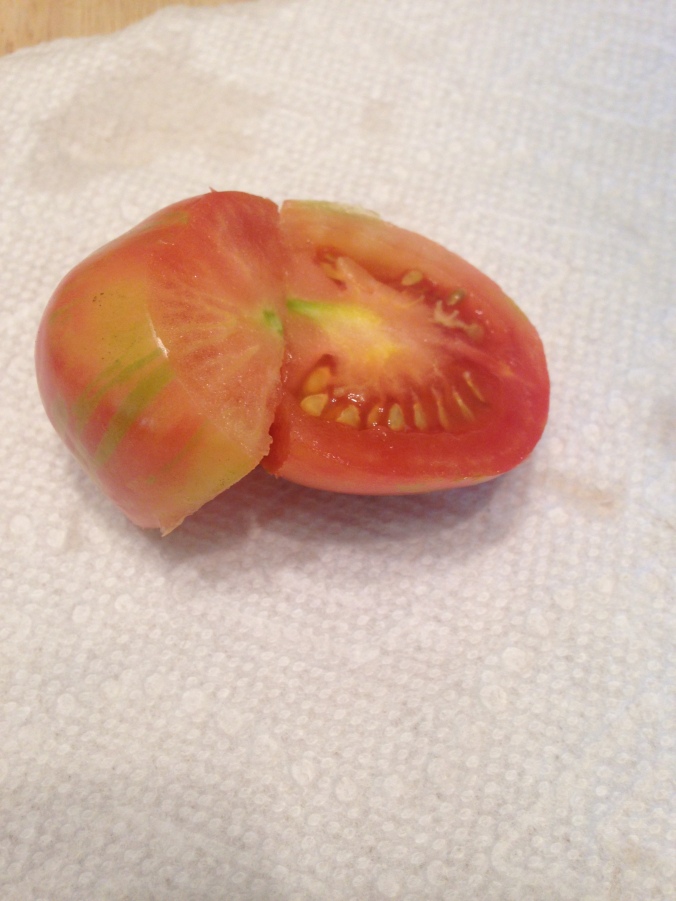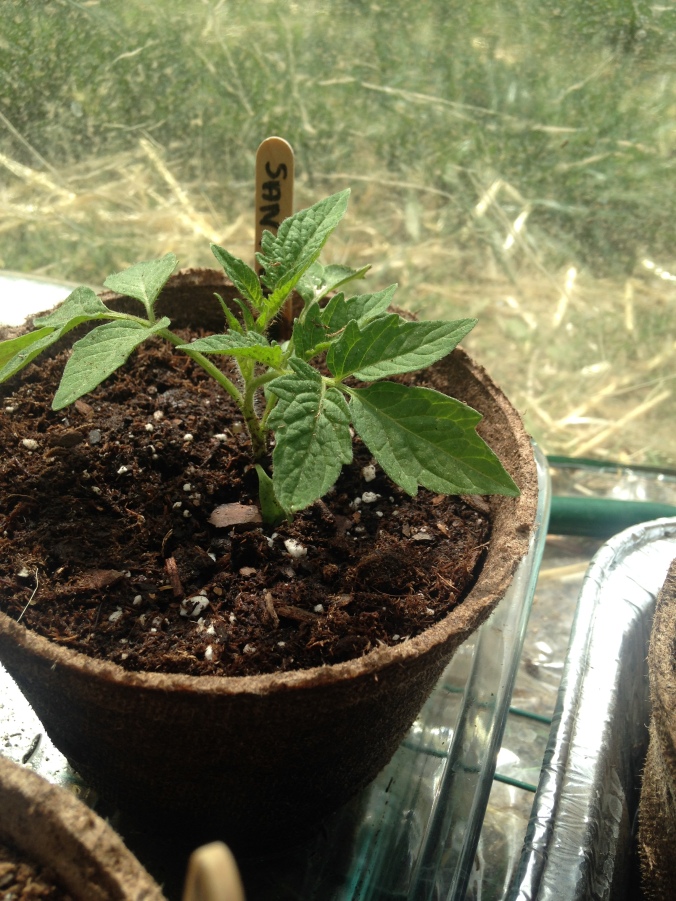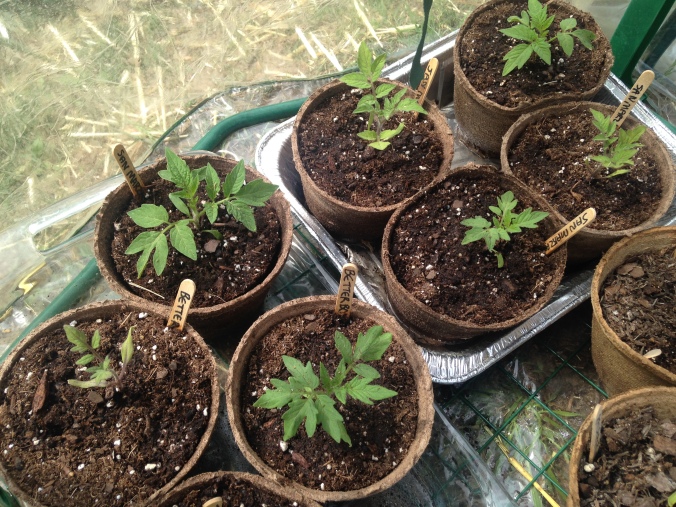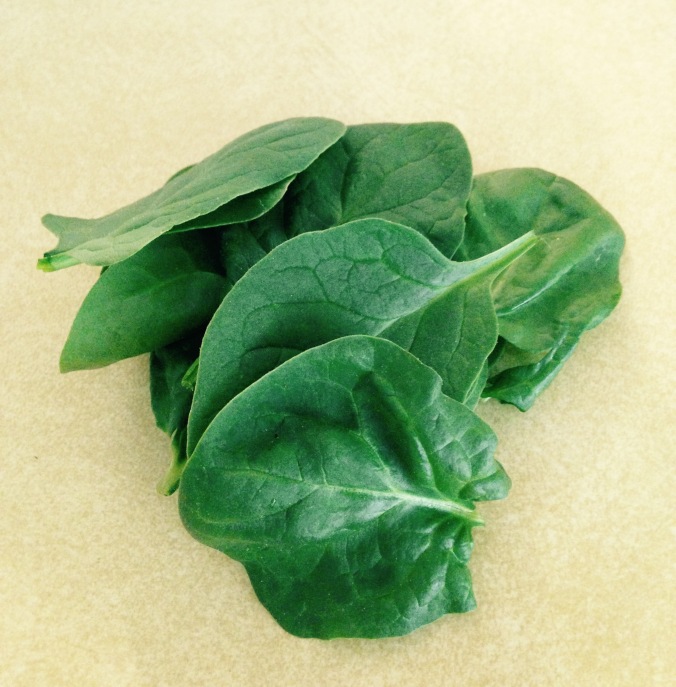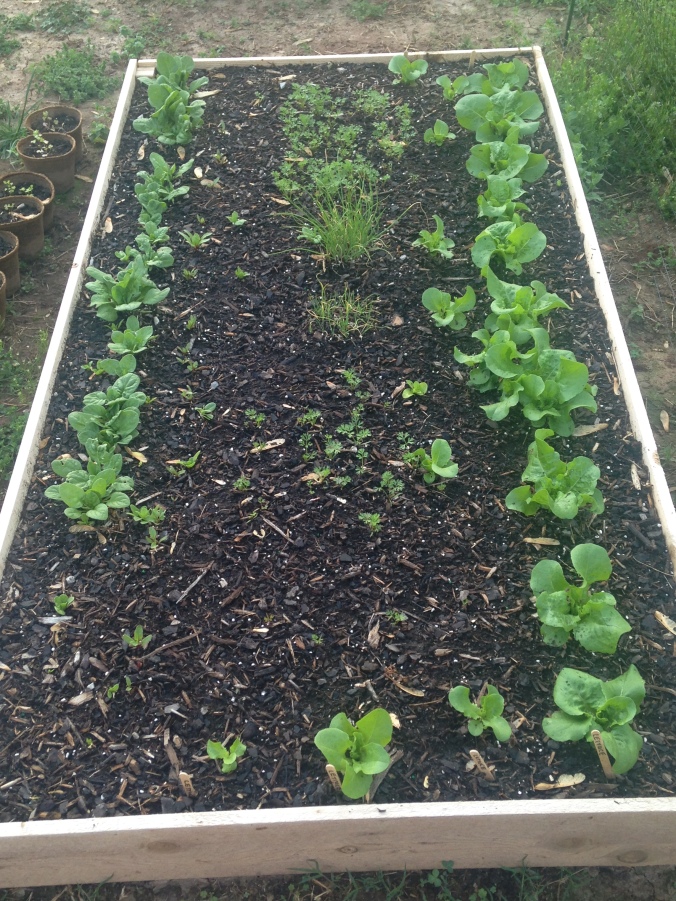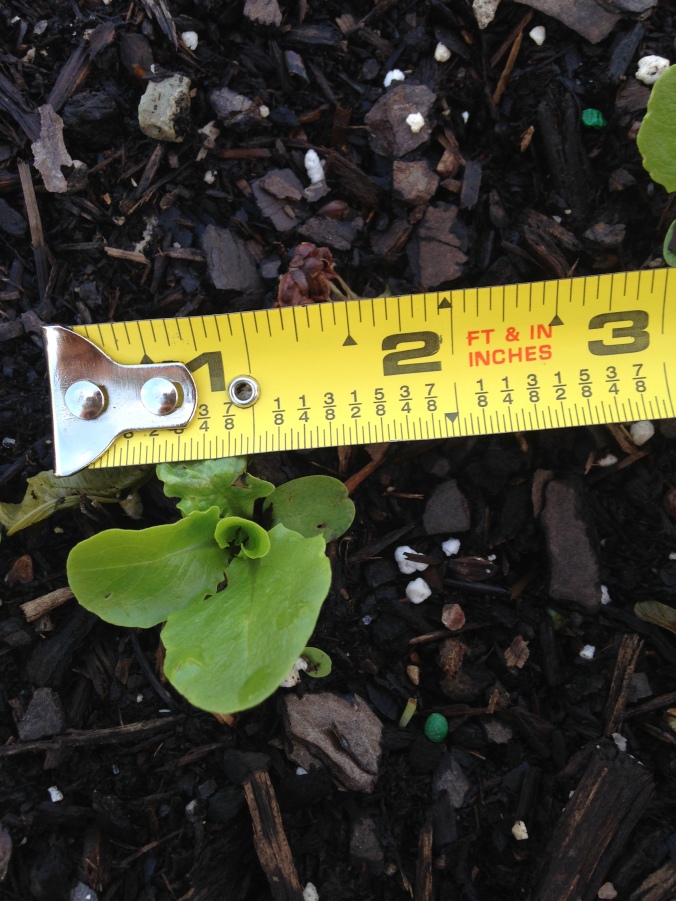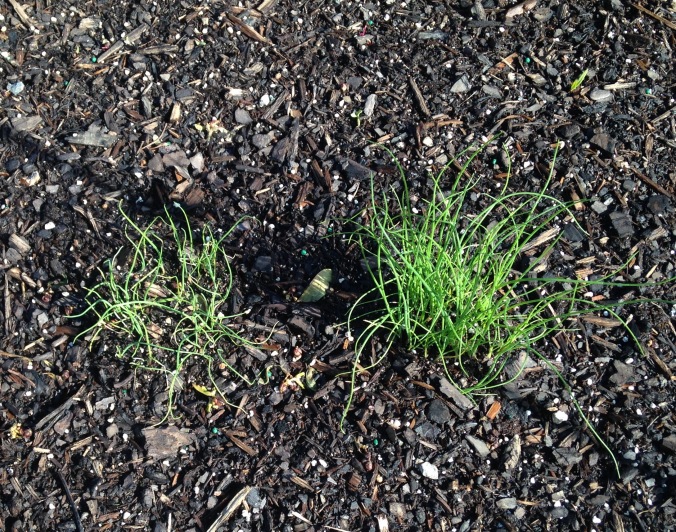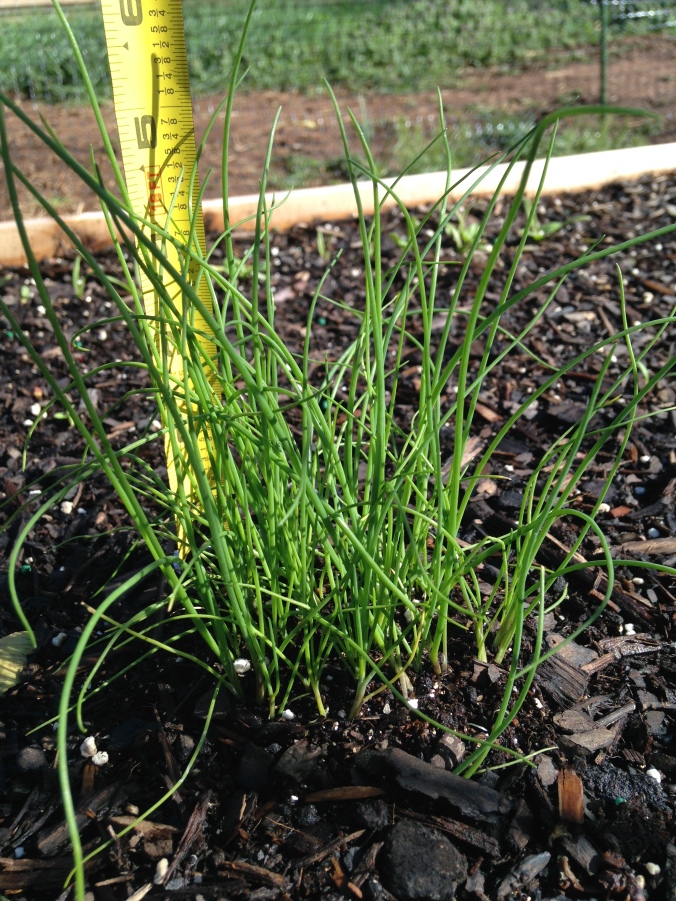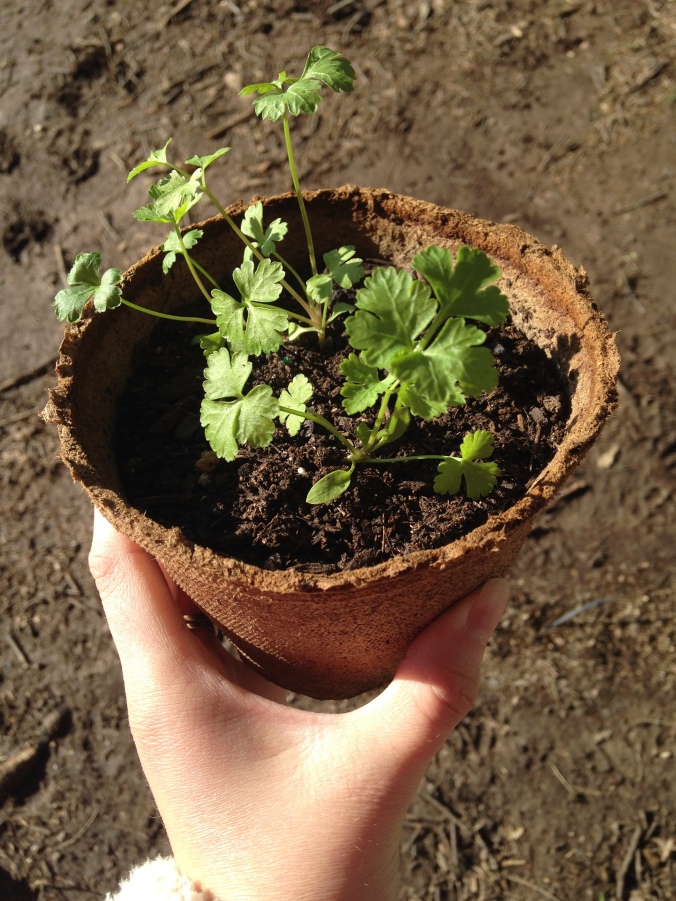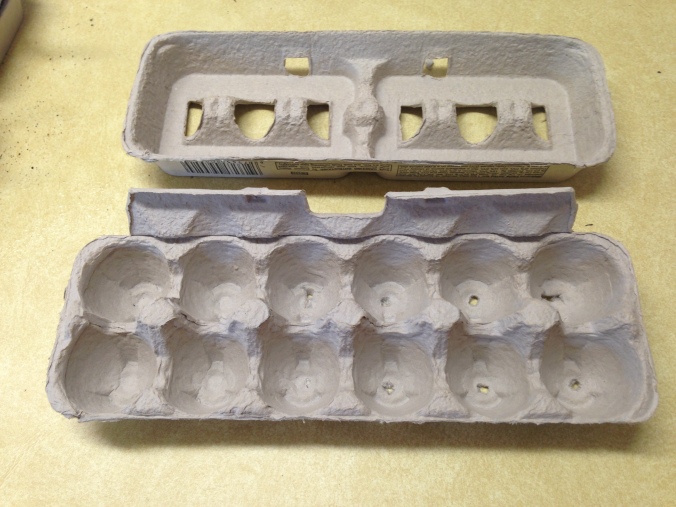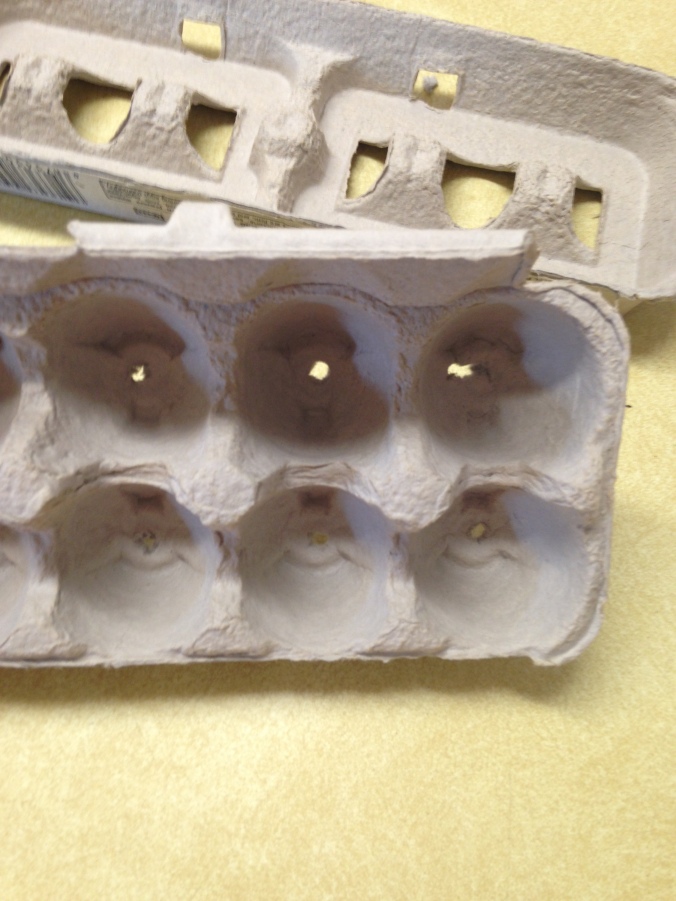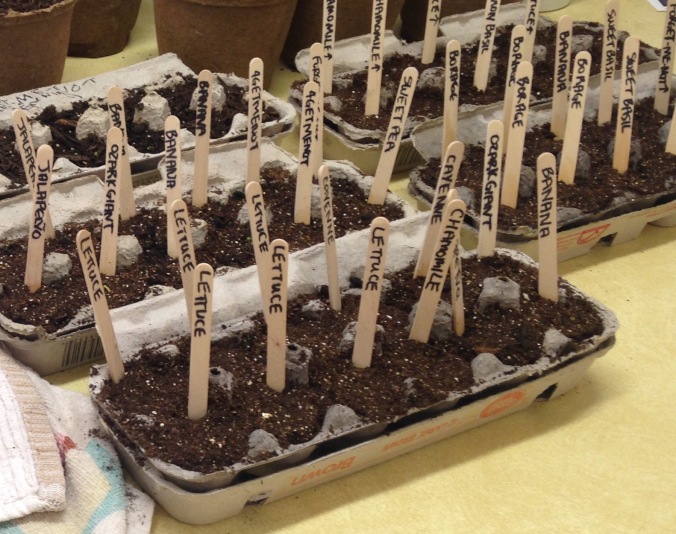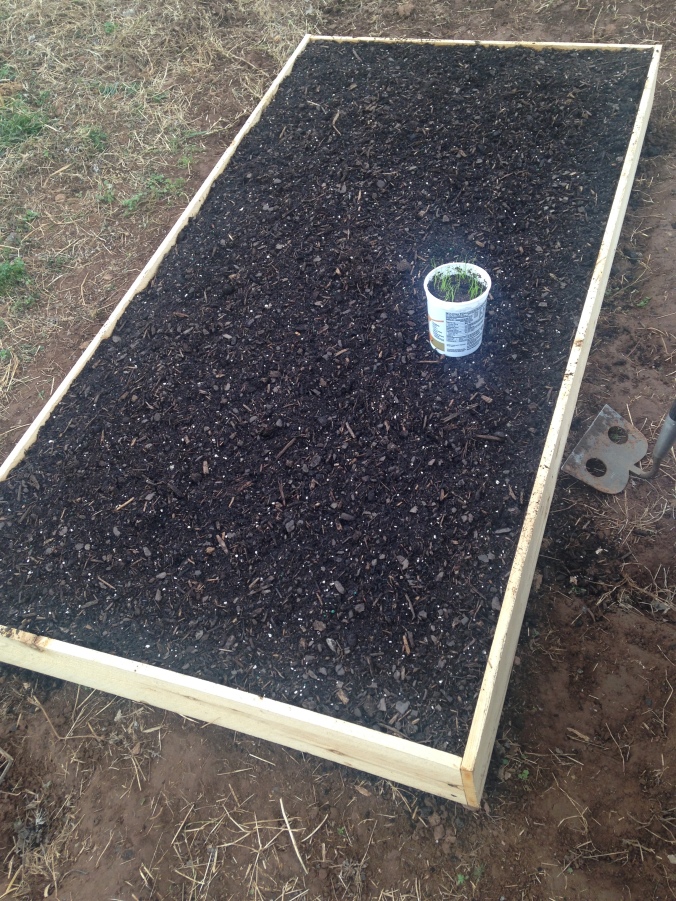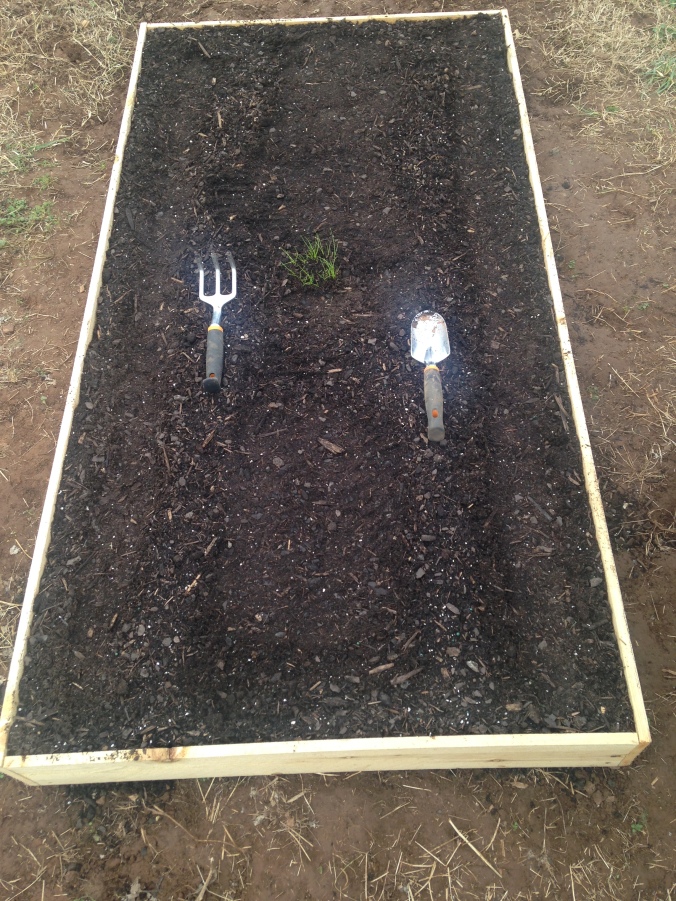Hello reader,
Yesterday, I said in my post that only the San Marzano and Pink Vernissage were beginning to ripen. Well, the Jet Star and Better Boy tomatoes must have overheard the news because when I went out to the garden after work, voilà! Not one, but TWO Jet Star tomatoes were orange! In a day or two, they’ll be ready to pick!
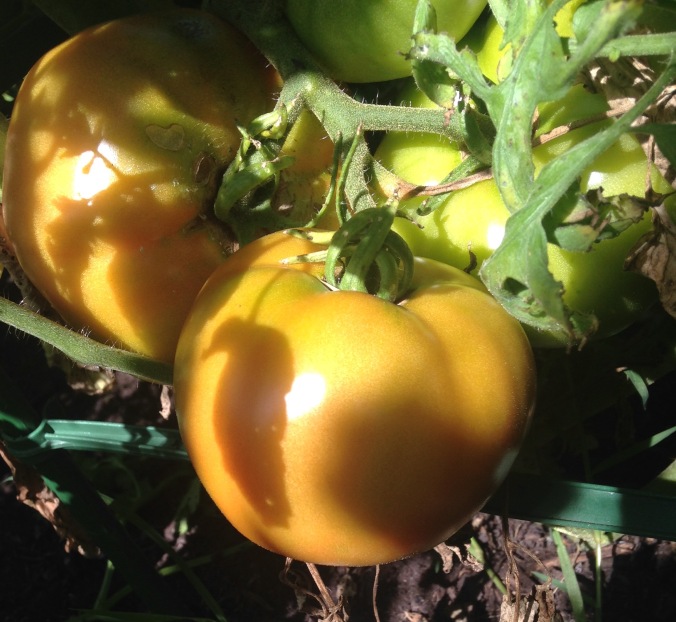
MMMMH sandwiches!
I also took a new photo of all the veggies we have sitting around waiting to be eaten. There were more veggies to harvest today, and the bounty is beginning to stagger in at a slightly more steady rate.
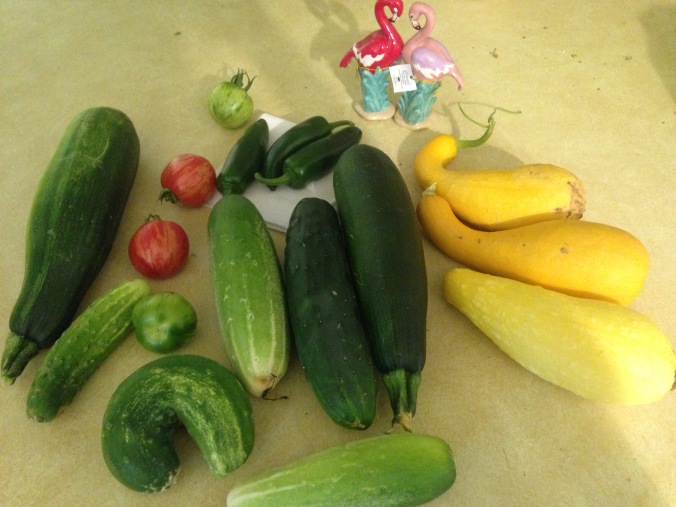
We have here (aside from the Flamimgo salt and pepper shakers I threw in for kicks) Fordhook Zucchini, possibly a Black Beauty Zucchini, yellow squash (I THINK it’s the Early Prolific), Green Vernisagge, Pink Vernisagge, the jalapeños from this past weekend, and cucumbers. I have no idea which variety of cucumber, because they have really intertwined together!
We have more on the way by the looks of it.
Check it out:
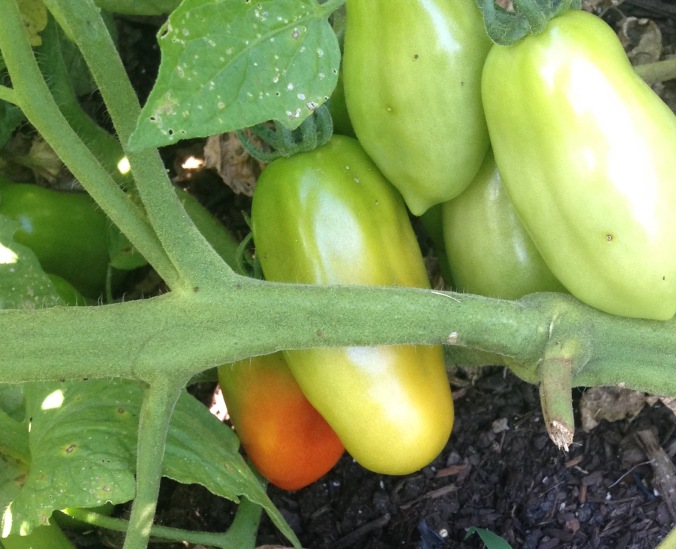
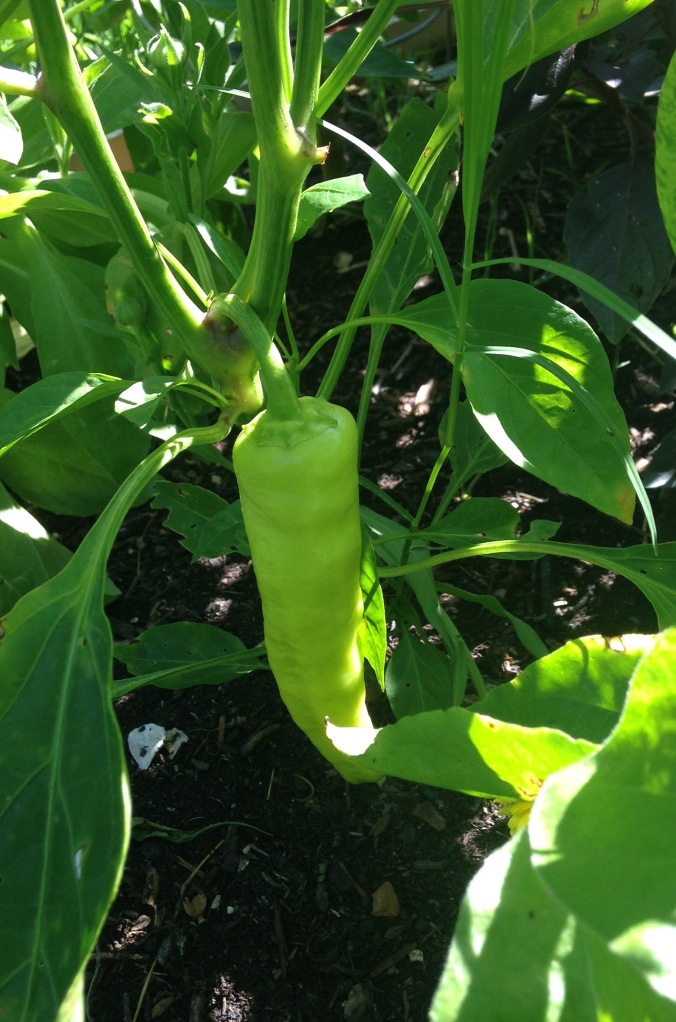
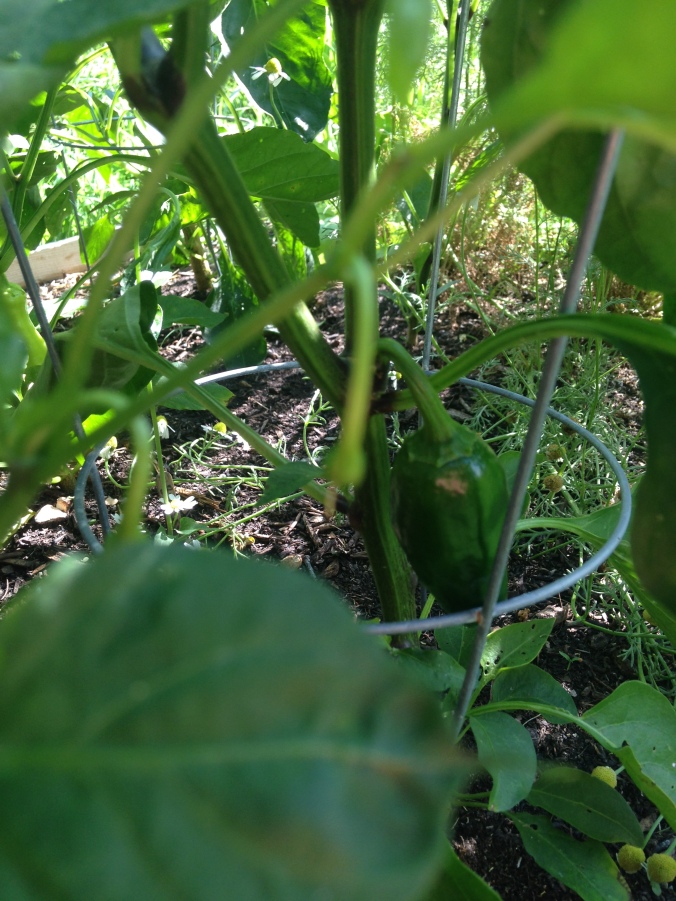
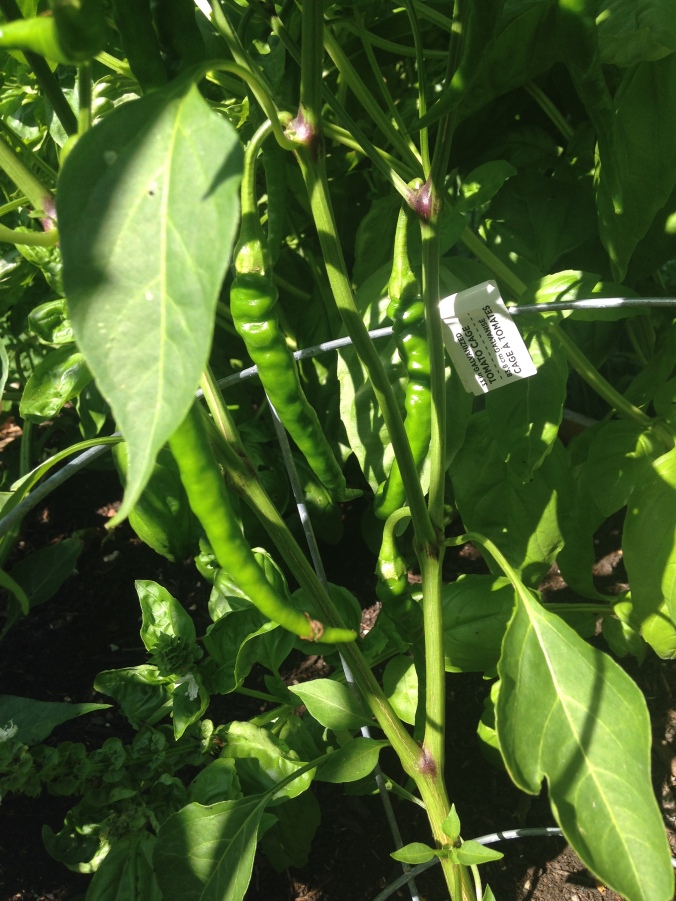
Pictured above are San Marzano Tomatoes, Banana Pepper, Jalapeño Mild Pepper, and Cayenne Pepper. (San Marzano was Ferry-Morse purchased at store in town and the peppers are heirlooms from Baker Creek). All of these were grown from seed and you can see previous posts that track the journey of growing them! If you look back at April posts, you’ll notice they’ve grown a lot since then. We learned as we were transplanting them that the egg cartons had caused them to become root bound, but once they were removed from those and planted in the garden they REALLY took off!
On a different note, and arguably the main point of this post, we have lettuce seeds in abundance. The Buttercrunch heirloom variety that we ordered from Baker Creek in Mansfield, MO has officially gone to seed, and so we are scurrying around trying to get everything together to save it for next spring (or maybe even this fall).
The lettuce is extremely tall, and we ended up staking it to keep it standing up! The carrot going to seed (third picture down) already has fallen over, unfortunately, but that hasn’t slowed it down!
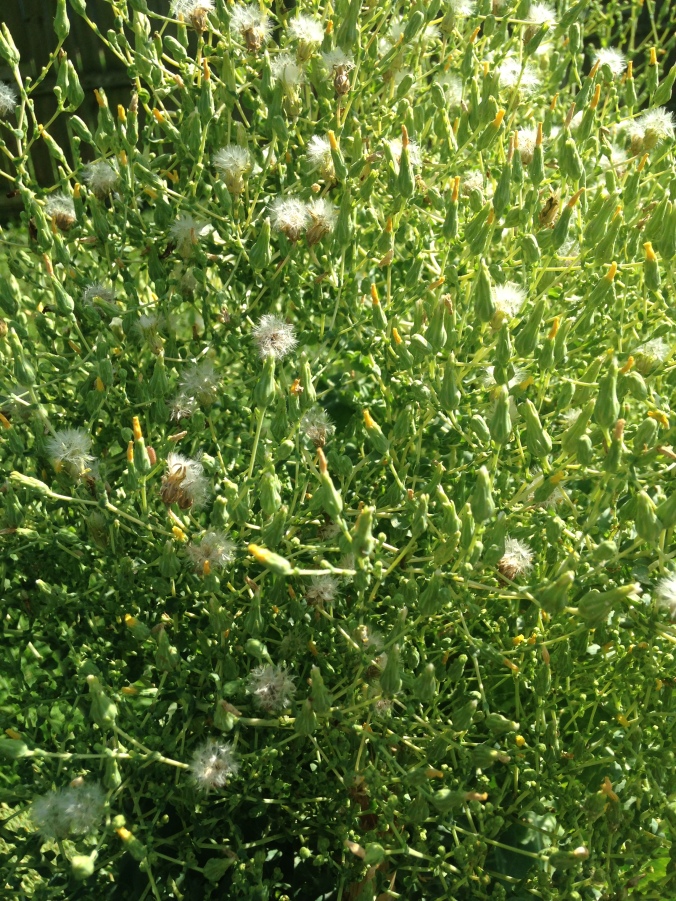
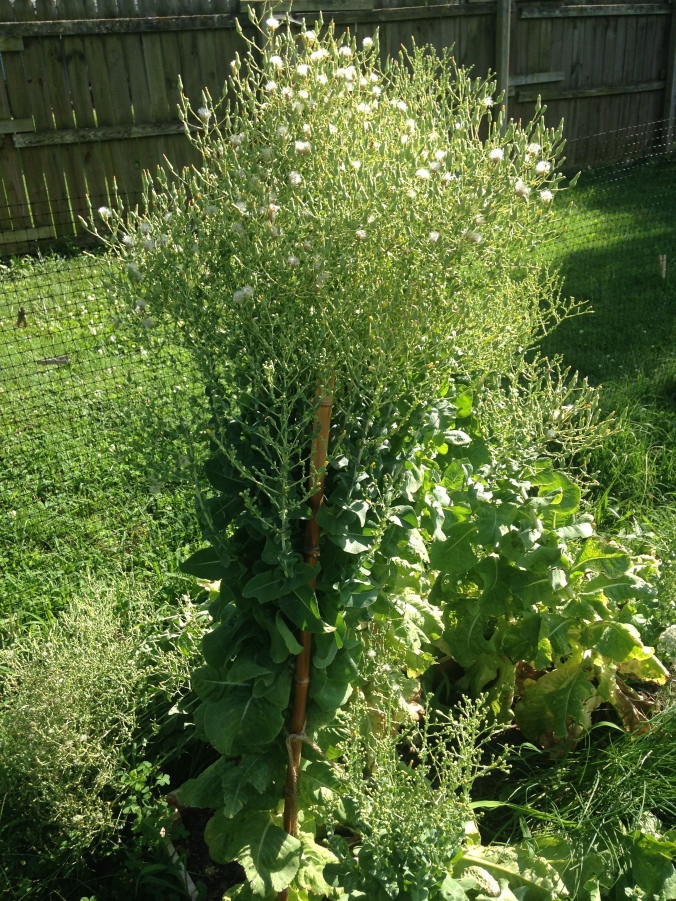
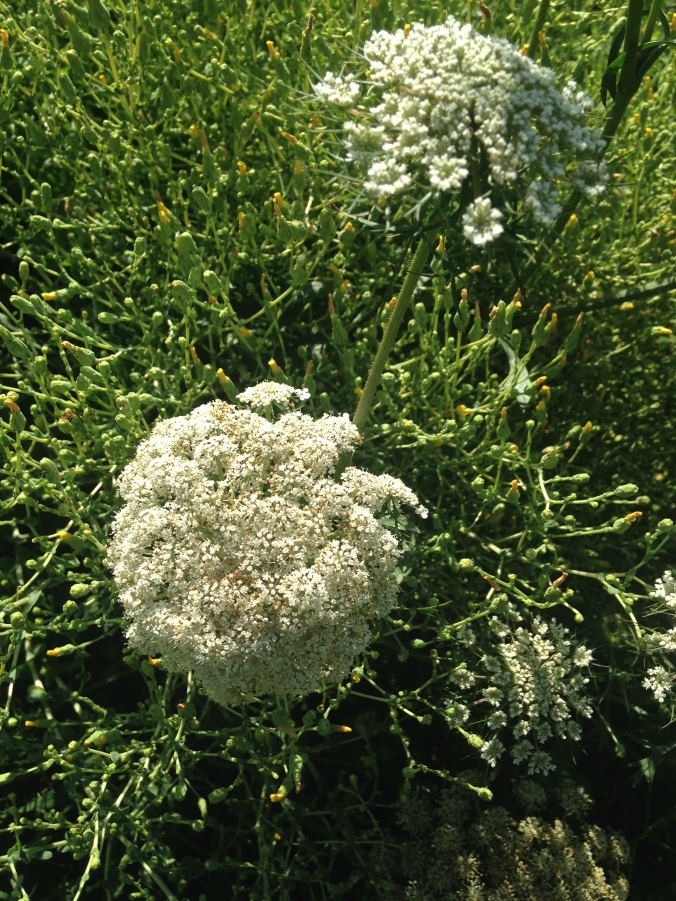
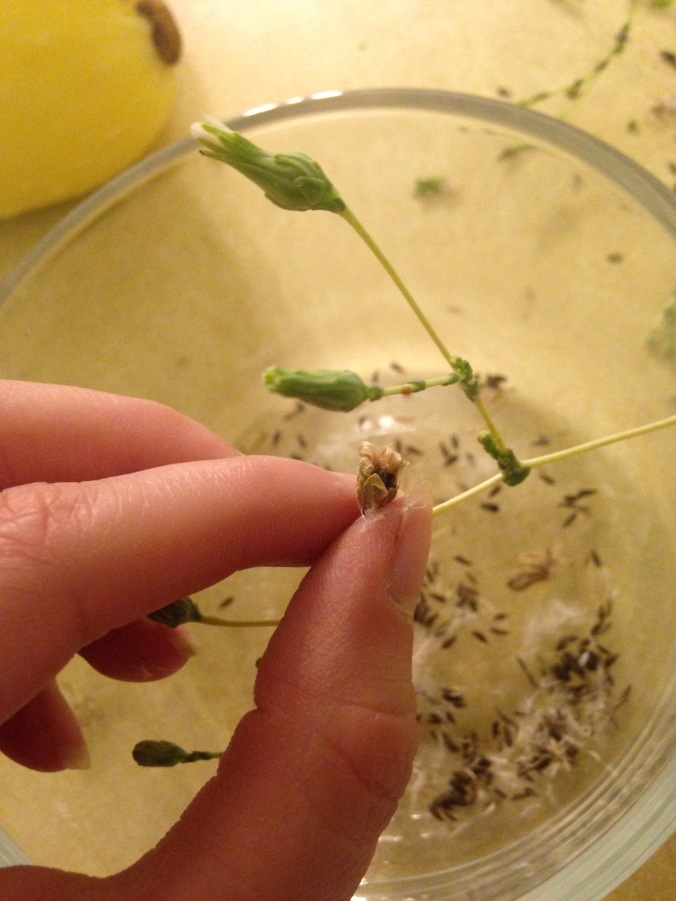

So how do you save lettuce seed you might ask? We’re still learning as we go, but lettuce should be fairly easy as far as saving seeds goes. We are opening up the pods that look like dandelions, and the seeds that are dark in color are the ones we are saving. If the pod has dried out, that’s a sure sign that the seeds will be a dark brown!
We are currently looking into how to store the seeds, and will post an update later. One we have our seeds saved, we hope to participate in a seed exchange nearby and trade our seeds for some others (while keeping some of ours to also plant).
Until then, keep up the good work of crafting your garden!
